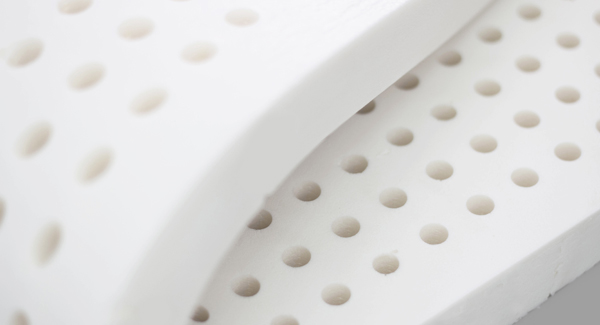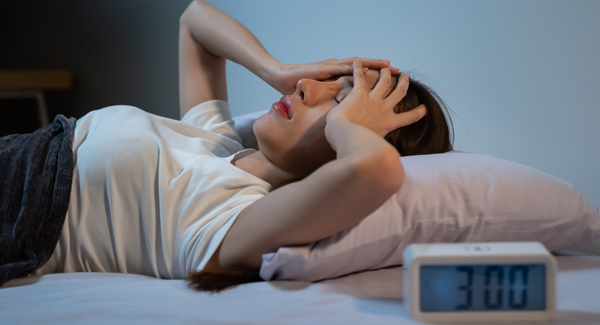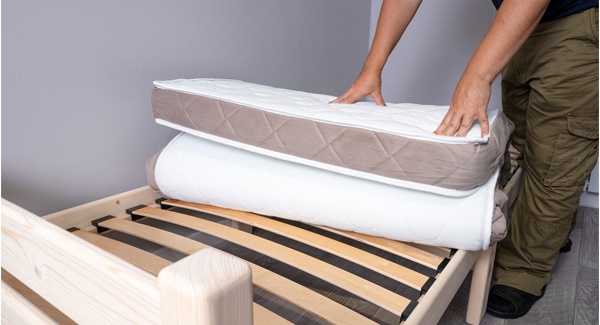Home » Mattress types » What Is A Latex Mattress? Here’s What You Need To Know
What Is A Latex Mattress?
Article navigation
- Published:
- Written by: Tony Brown
- Topic: Mattress types
Foam mattresses have become increasingly popular over recent years. Most people are familiar with the pressure-relieving qualities of memory foam, but natural latex is a highly durable material that offers a natural and sustainable alternative. Latex foam was developed in the 1920s. It is used in items like seating, bedding, and pillows for its cushioning properties.

Natural latex is a milky fluid that comes from the sap of the rubber tree. The latex is carefully harvested from the tree and transported to a manufacturing facility, where it is processed to create latex foam. The process of harvesting latex is completely sustainable and eco-friendly.
Dunlop and Talalay are the two processes used to create natural latex. With the Dunlop process, liquid latex is mixed into a frothy foam and poured into a mould. It is then baked and hardened. This creates a denser foam with a firmer feel.
With the Talalay process, Liquid latex is whipped into a frothy foam and partially poured into a mould, where it is vacuum-sealed. This causes the latex to expand, resulting in a softer, more bouncy feel.
A traditional latex mattress consists of one or more latex layers, while hybrid models may combine latex with either springs or other materials.
Synthetic latex, on the other hand, is entirely man-made from chemical compounds. It is a cost-effective alternative to natural latex and is often found in cheaper mattresses. It tends to be less durable and does not perform as well.
Blended latex is a mixture of both natural and synthetic latex. But more often than not is predominately synthetic to make it more affordable.
What are the benefits of natural latex?
Natural latex moulds and adapts to the shape of the body. The material provides good pressure relief and even weight distribution across different sleeping positions. Latex can help alleviate back pain by keeping the spine correctly aligned during sleep.
Due to the removal of pressure, sleeping on a latex mattress can also result in better blood circulation.
The material is naturally resilient and recovers its shape quickly when pressure is removed, making it easier to turn over in bed. The natural resiliency of latex means that it absorbs movement, so sleeping partners are less likely to disturb one another when they move in bed.
Latex is naturally antimicrobial and is resistant to dust mites, mould, and mildew. It is also quiet in use, so there are no squeaky springs or components keeping you or your partner awake.
Unlike other foams that may retain heat, latex foam has an open cell structure that allows good ventilation, helping to keep the material cool and breathable.
Do latex mattresses need turning?
Latex mattresses are typically one-sided. They only have one sleeping surface and cannot be flipped over like traditional mattresses.
Latex is an incredibly durable and resilient material that retains its shape better than other materials. Thus indentations and body impressions may be less prominent on the mattress’s surface.
Latex is a heavy material making mattress turning a daunting prospect. However, rotating the mattress end to end occasionally can help to extend its life. Each manufacturer will provide specific instructions for mattress turning, so it helps to refer to this advice to keep physical effort to a minimum.
Do latex beds smell?
When you purchase a latex mattress, you may detect a mild natural or rubbery odour when removing the packaging. This is perfectly normal with most new mattresses and is to be expected. The smells are generally considered harmless and are no cause for concern.
If you notice a smell from your new mattress, lay it down flat and allow it time to breathe for a few hours in a well-ventilated room before use. The smell should disperse after a few weeks.
How long does it take to adjust to a new latex mattress?
Like a new pair of shoes, it can take time to adapt to a new mattress. Your new mattress may feel uncomfortable initially or even cause some back pain.
It can take up to a month to adapt to a new latex mattress. It may feel quite different from your old one, especially if you switch from a traditional sprung mattress to an all-foam mattress. But give it time, and your new mattress will begin to feel more comfortable.
Some manufacturers may also offer a sleep trial, so you may have the option to return it if you still find it uncomfortable after a reasonable period.
How long do latex mattresses last?
One of the limitations of latex mattresses is that they are typically one-sided, which means that all the wear and tear is concentrated on a single sleeping surface. That said, latex is a durable material, and it is not uncommon for higher-quality latex mattresses to last between 15 and 25 years when looked after properly.
However, not all mattresses are created equal, and several factors affect how long a mattress lasts.
The quantity and quality of the latex in the mattress can affect its longevity. Higher-quality mattresses may contain a single durable layer of natural latex providing good longevity. In contrast, hybrid models may contain a thin layer of latex and wear out sooner than expected.
Some mattresses may contain synthetic latex, which is not as resilient as natural latex and will typically break down sooner.
Body weight is another factor. A mattress used by a heavier person is likely to wear out sooner than a mattress used by a lighter person because there is more stress and strain applied to the mattress. Similarly, a mattress shared by two people may wear out sooner than a mattress used by a single person.
Mattress care also determines the life expectancy of a mattress. Latex mattresses may need turning from time to time to help even out the wear. Most manufacturers also recommend using a mattress cover to help keep the mattress in top condition.
What type of bed base is suitable for a latex mattress?
Latex mattresses tend to perform best on a well-ventilated solid base or bed frame in good condition. If the mattress is paired with a slatted base, it’s important to check the manufacturer’s recommendations regarding slat spacing. If the slats are too far apart, the latex may migrate between the gaps, damaging the mattress.
Latex or memory foam, which is better?
Latex and memory foam are materials commonly used in mattresses and are often compared with one another. Both mattress types conform well to the shape of the body and provide good support and cushioning.
Latex responds and recovers quickly. It has a slightly bouncier feel, making it easier to turn over in bed. Memory foam is less responsive. As the body slowly sinks into the mattress and the material is slow to recover, this can sometimes give people the sensation of sinking into quicksand or feeling stuck in the mattress.
Both mattress types provide good pressure relief across different sleeping positions. Latex is typically more expensive than memory foam but tends to be more durable and longer-lasting.
Latex foam has an open cell structure keeping it cool and breathable, while memory foam can sometimes retain heat and feel warmer.
What are the alternatives to latex or foam mattresses?
Pocket springs are an excellent alternative to latex or foam mattresses. Like foam, pocket springs conform to the shape of the body, providing good support and cushioning. Furthermore, as each spring in the mattress is independent, sleeping partners are less likely to disturb each other in bed.
If you’re undecided about what type of mattress to choose, hybrid models combine springs and foams, providing the perfect compromise.
Final thoughts
Natural latex is a premium material that provides excellent cushioning, support and pressure relief. Keep in mind that not all latex mattresses are created equal. Some may be synthetic and will perform very differently from natural latex.
It can sometimes be unclear whether a mattress contains natural latex, synthetic latex or a mixture of the two. So before you buy, do plenty of research to ensure you are satisfied that the product descriptions are accurate.
Share this article

About the author
Tony Brown is the founder and creator of The Bed Consultant. His career in the bed industry began in 2002. After graduating from university with a degree in Business Administration, Tony joined one of the largest independent furniture retailers in the UK as a bed consultant. Tony has helped thousands of customers find the perfect mattress.




